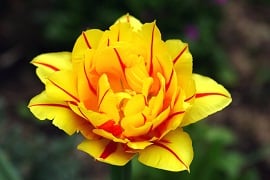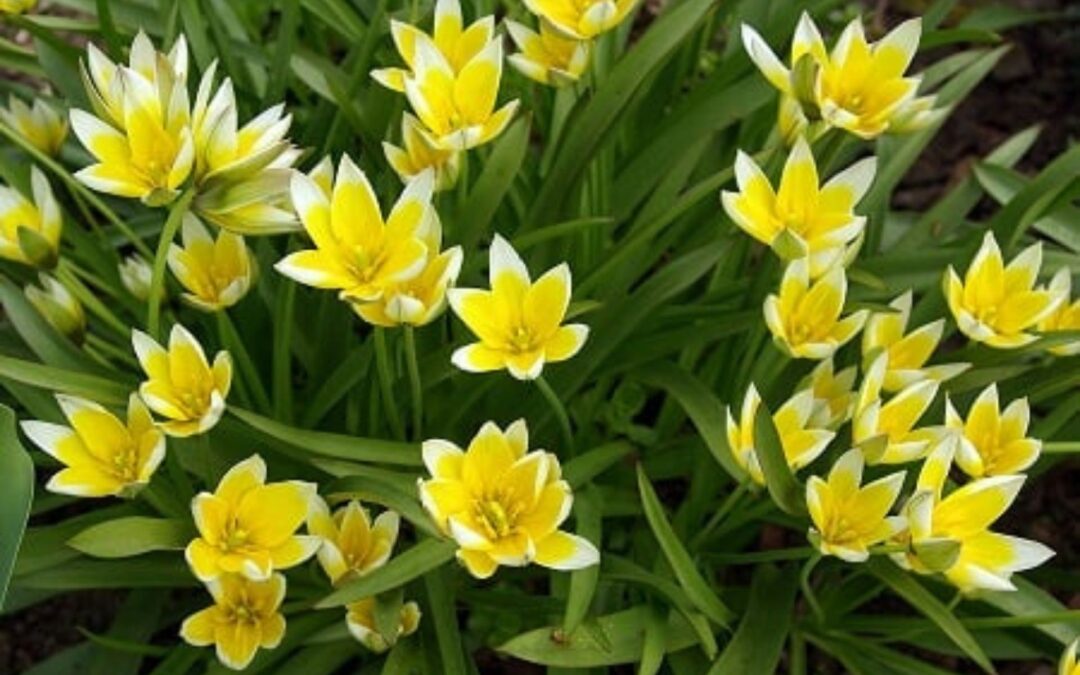Now is a great time to pick out tulip bulbs for a beautiful springtime landscape display. I don’t know about you, but I could just drool on some of those catalogs, and the websites are even better! Many companies have their bulbs on sale now to entice you to buy before it’s time to ship.
WHERE TO FIND BULBS
our choices are practically endless – home and garden centers, catalogs and a myriad of websites. I have listed some popular sites at the bottom of the page.
WHERE TO PLANT THEM
You need to take into consideration your hardiness zone and what kind of garden space you have. Most tulips grow in zones 3-8, but in zones 3-6 they grow well in full sun. In zones 7 & 8 they grow in shade or morning sun only. Bear in mind that trees are not fully leafed out when many tulips bloom. Check your hardiness zone on the USDA Plant Hardiness Zone Map.
Furthermore, tulips don’t like to be wet – in fact, most bulbs need very well-drained soil in an area that doesn’t get watered a lot.
Personally, I always look at the height of a plant (especially flowers on slender stems,) given our wind in Oklahoma. If the plant grows to 48″ tall, and the area I want to plant isn’t sheltered, I’m thinking “hmmmm…better not!”
NOTE on animal problems
If you have deer-eating-your-plants problems, you might want to consider other bulbs, because deer love to eat tulips! Squirrels can be a problem also, but if you provide other food for them, they usually leave them alone. Some flowering bulb plants like allium, scilla, or fritillaria imperialis naturally repel deer and rodents, and you may be able to plant tulips around them.
WHAT KIND OF TULIP BULBS TO BUY
There are so many varieties to choose from, anyone can find a color and style they like. But, whatever you buy, be sure you understand what zone it’s hardy in, how tall it will get, and when it blooms. You may want to order some taller ones for the background, some shorter ones in front – maybe some that bloom in early spring along with some that bloom in late spring, so you have a longer color display.
WHAT TO DO AFTER THEY BLOOM
Nothing! Leave the foliage right where it is until it’s dead. The foliage continues to make food for the bulb, readying it for next year so it will bloom again. If you cut it off too soon, or tie it up, the bulb won’t do well next year. Once the foliage is gone, feel free to snip it off so it doesn’t offend the rest of your beautiful garden!
Many people feel like they have to lift the bulbs out and replant them next year, but that’s a lot of work and not the best scenario for the plant. Leaving them where they are is best for them. It is advisable not to plant them in the first place anywhere that you are going to water heavily during the summer. Bulbs don’t like to stay wet!!


